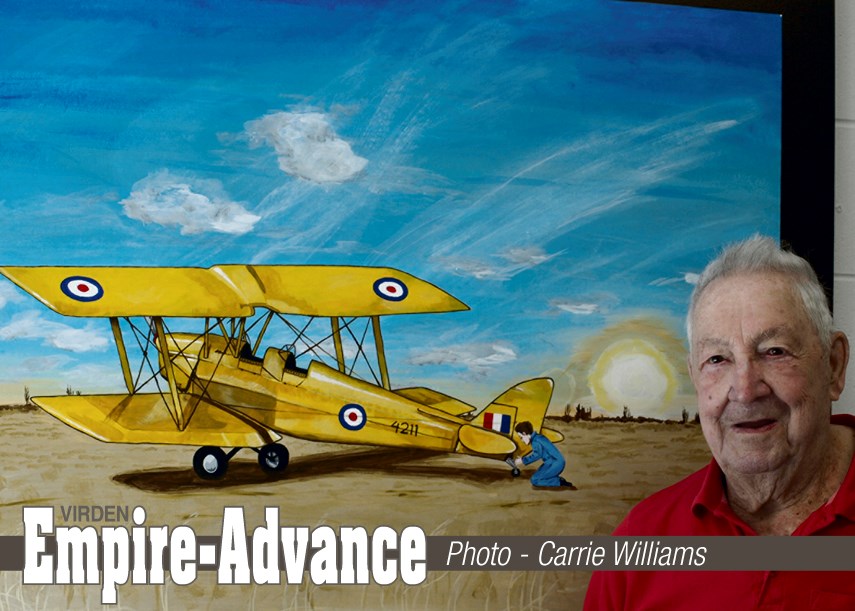Cecil Coleman, the 12th member of the Manitoba Dragoons, worked at the Virden Airport in Oct. 1940, until it shut down after the war in 1944.
Coleman was waiting for a flight, to serve in the war at Thunder Bay, ON, when the boss of the Virden Airport put him to work. Coleman ended up staying in Virden. Men serving in the war at the airport, were billeted at homes in Virden, and were bussed back and forth to the airport daily. Coleman was ranked a Category E, which meant essential services. Thus, he was not able to go overseas.
In November 1940, Coleman assisted with the construction of the airport buildings and field. He says in 1921 the field was enlarged. He carried a chauffeur license and was put to work driving big trucks. One of his many duties was driving the fire truck at the airport.
If there was a plane crash, Coleman and his crew were notified right away and headed to the crash. “Everything is legal in wartime,” says Coleman. He talks of having to plow through farmers’ crops and fences to take the most direct route to a plane crash. He explained that farmers were not entitled to have the repairs made to damaged property, but quite often a crew from the airport would lend a helping hand.
In December 1944, after the Virden Airport shutdown, Coleman relocated to Brandon to work at the Brandon Oil Refinery. He gauged tanks and filled trucks until the war was over in April 1945.
John Newman, of Virden, also worked at the airport during the war. He was a member of the Winnipeg Rifles, also known as “Little Black Devils”.
Newman worked shiftwork at the airport. One of his duties was as a mechanic for planes; he remembers taking the wings and rudders off of the Tiger Moths and putting new bolts in. Newman was responsible for lighting flair pods during night flights, and cleaning planes. He made sure planes had enough fuel, and everyone was strapped in properly before flights.
Newman recalls when the airport shut down, the old buildings were torn down and barracks were moved into town.
Cecil Coleman, next to a painted version of a World War II photo. The painting depicts Coleman fixing a 1929 Gypsy Moth at Virden Airport during wartime.
This particular plane was the first fatality at the Virden Airport. According to Coleman, The pilot while eating his lunch said, “This will be the last meal I eat here.” Not much later, the pilot was seen by farmers, flying the 1929 Gypsy Moth in circles, until he did a nose-dive into the ground. A few days before the accident, the pilot had been on leave and found out his wife was cheating on him.
John Newman holding a photo of himself in early 1940s at the Virden airport, next to a Tiger Moth he used to work on.




